Edogawa Craft Stories

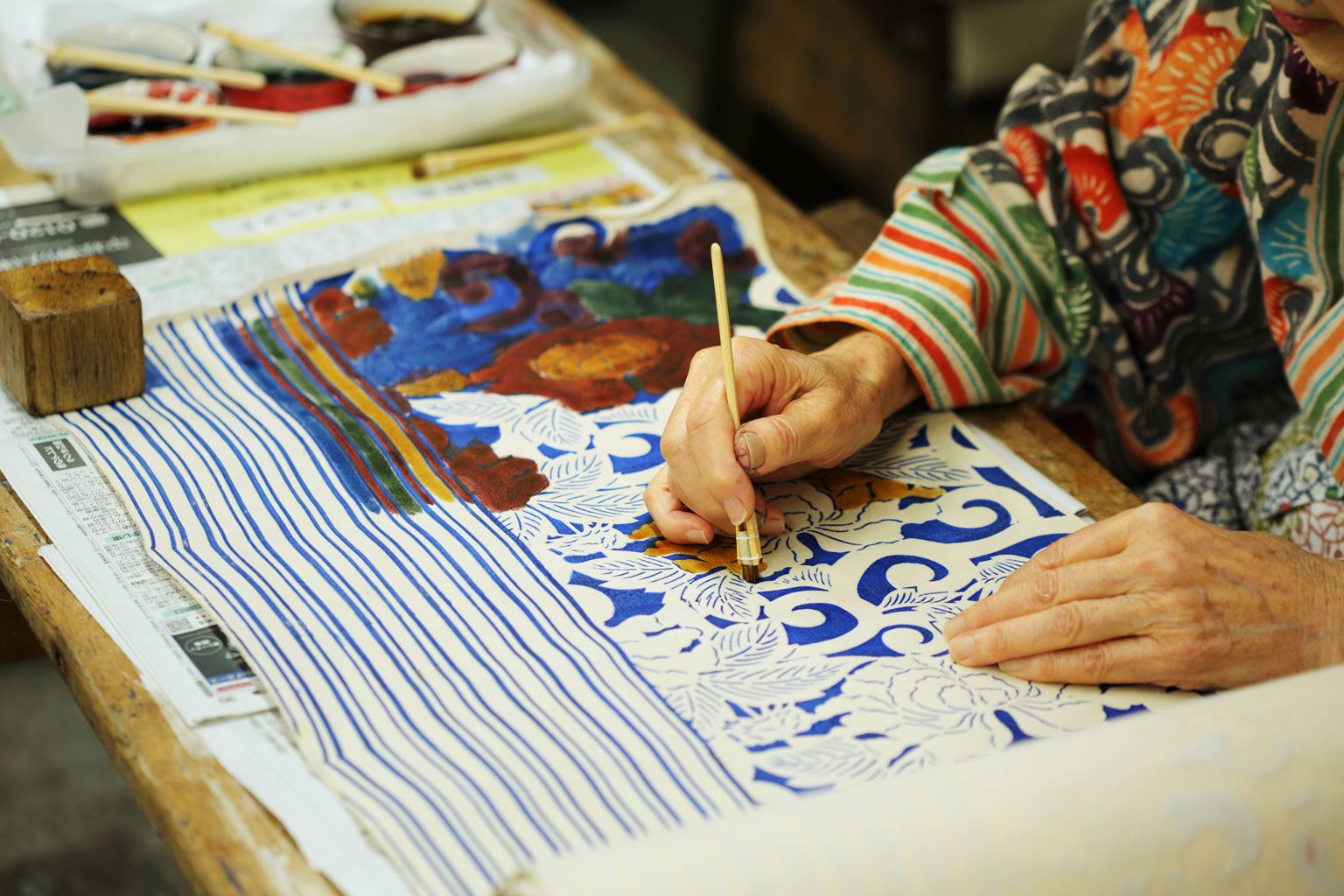
Kata Komon: Passing Down Patterns, Layering the Colors of Generations
Kata Komon
Mitsuhashi Kobo
Mitsuhashi Kyoko
A beloved type of kimono patterned all over, komon is known as stylish wear for daily outings and dining. Tucked into a quiet residential neighborhood of Nishi-Komatsugawa in Edogawa City is Mitsuhashi Kobo, a kata komon workshop known for its vivid patterns created using traditional kata-zome stencil dyeing techniques. Under the hand of sixth-generation artisan Mitsuhashi Kyoko, the beauty of dyed cloth infused with a modern sensibility continues to be born here.
Worn as an expression of “everyday elegance,” komon kimono are distinguished by their all-over patterns. Of particular note is Edo komon, a traditional dyeing style that originated in the Edo period and features intricately detailed, repeating motifs applied with stencils. Mitsuhashi Kobo was founded in the Kansei era of the late 18th century (1789–1801). A testament to that long history is its remarkable collection of roughly 20,000 stencil patterns passed down through the generations. With such a bold and distinctive array of designs—so much so that people often say “You can tell it’s a Mitsuhashi with just one look”—the studio’s work became known as kata komon.
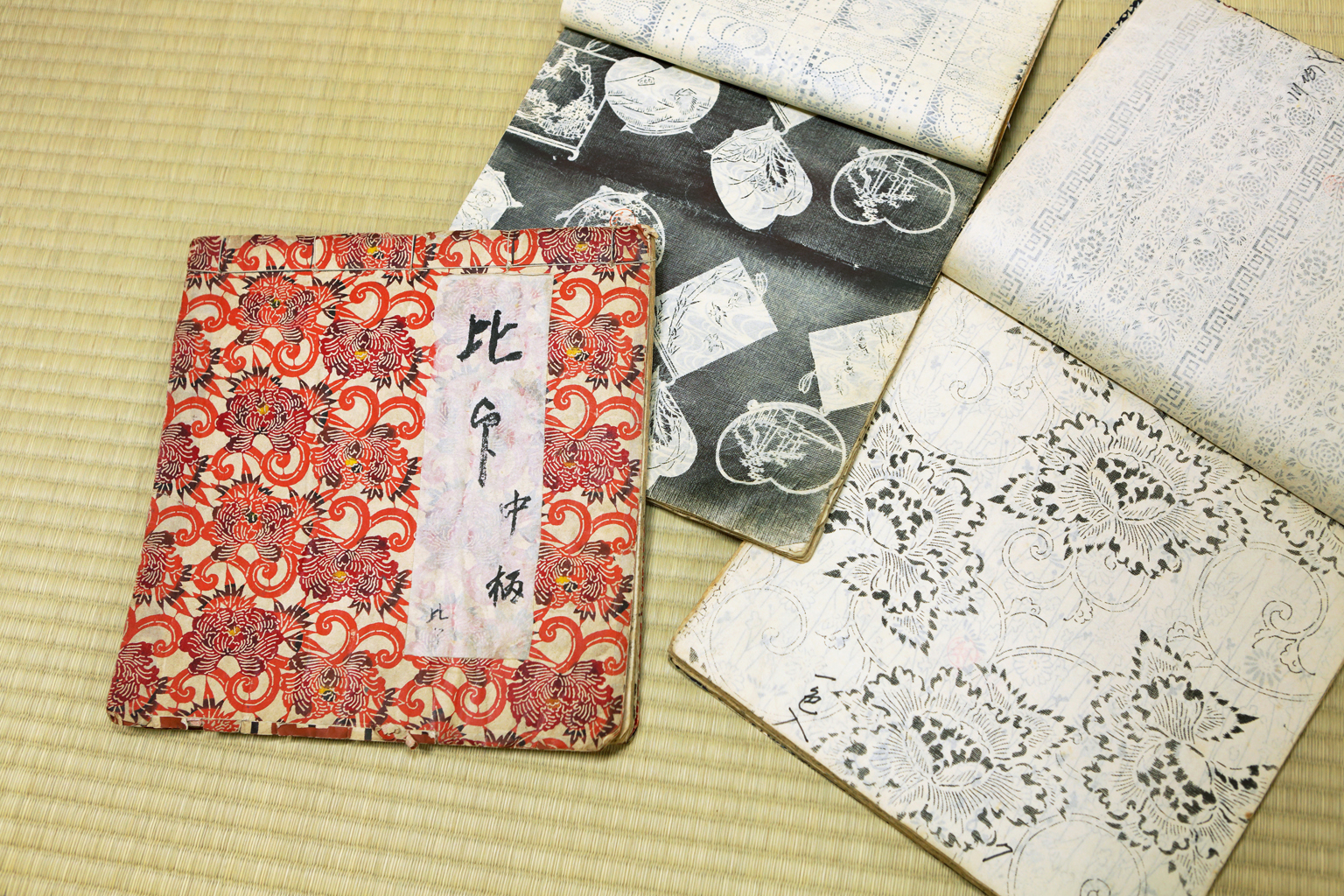
A pattern book cataloging the countless stencils housed at the studio. The worn pages speak to a long history of use.
Distinct Identity in Every Pattern: The Appeal of Kata Komon
Traditional Edo komon is characterized by such fine detail that from a distance it almost appears solid-colored. But Mitsuhashi Studio’s approach boldly defies that norm—embracing daring patterns and contemporary colors like turquoise blue and khaki to create fresh, modern looks. “While honoring tradition, I’ve always tried to express something that fits today’s lifestyle,” says sixth-generation artisan Mitsuhashi Kyoko.
“My father-in-law, the fifth-generation Eizo, had a highly original outlook. He adapted bingata, the traditional dyeing technique of Okinawa, into kimono designs with a Kanto flair. His bold patterns and stencil work really made a splash. That kind of individuality, distinct from conventional Edo komon, is how the term kata komon came into use.”」
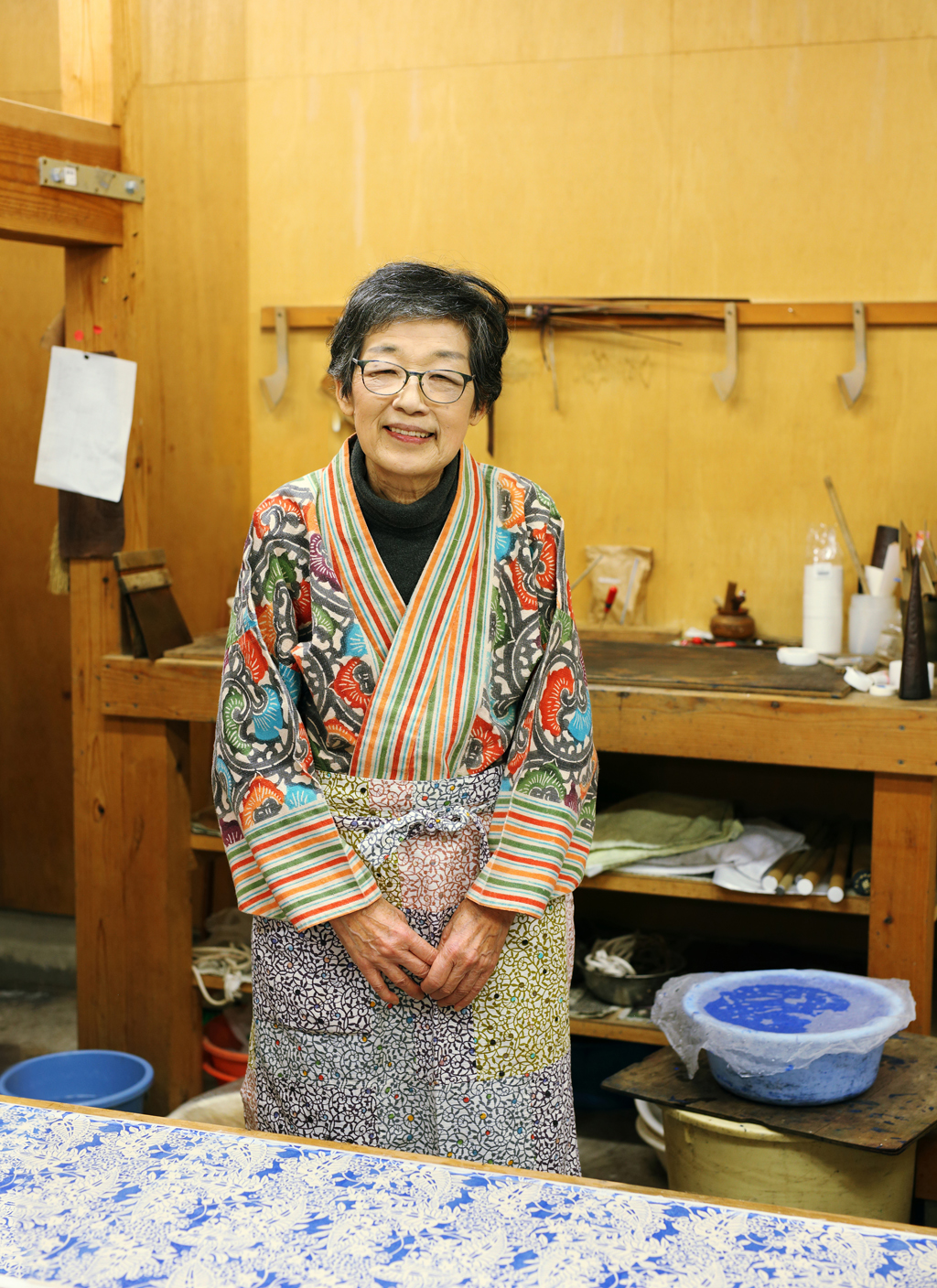
Mitsuhashi Kyoko, speaking gently about the history of Mitsuhashi Studio. Her kind smile leaves a warm impression, but once she steps into the workshop to prepare for dyeing, her expression sharpens with quiet focus.
The studio traces its roots to the mid-Edo period, when its founder, Matsumotoya Kintaro, began producing hand-dyed yukata fabric.
Still central to the studio’s work today is the nagaita chugata technique, which involves stretching a piece of cloth over a long wooden board and applying paste through a stencil to block the dye. The paste prevents dye from penetrating those areas, so when it is later washed away, crisp white patterns emerge on the colored fabric.
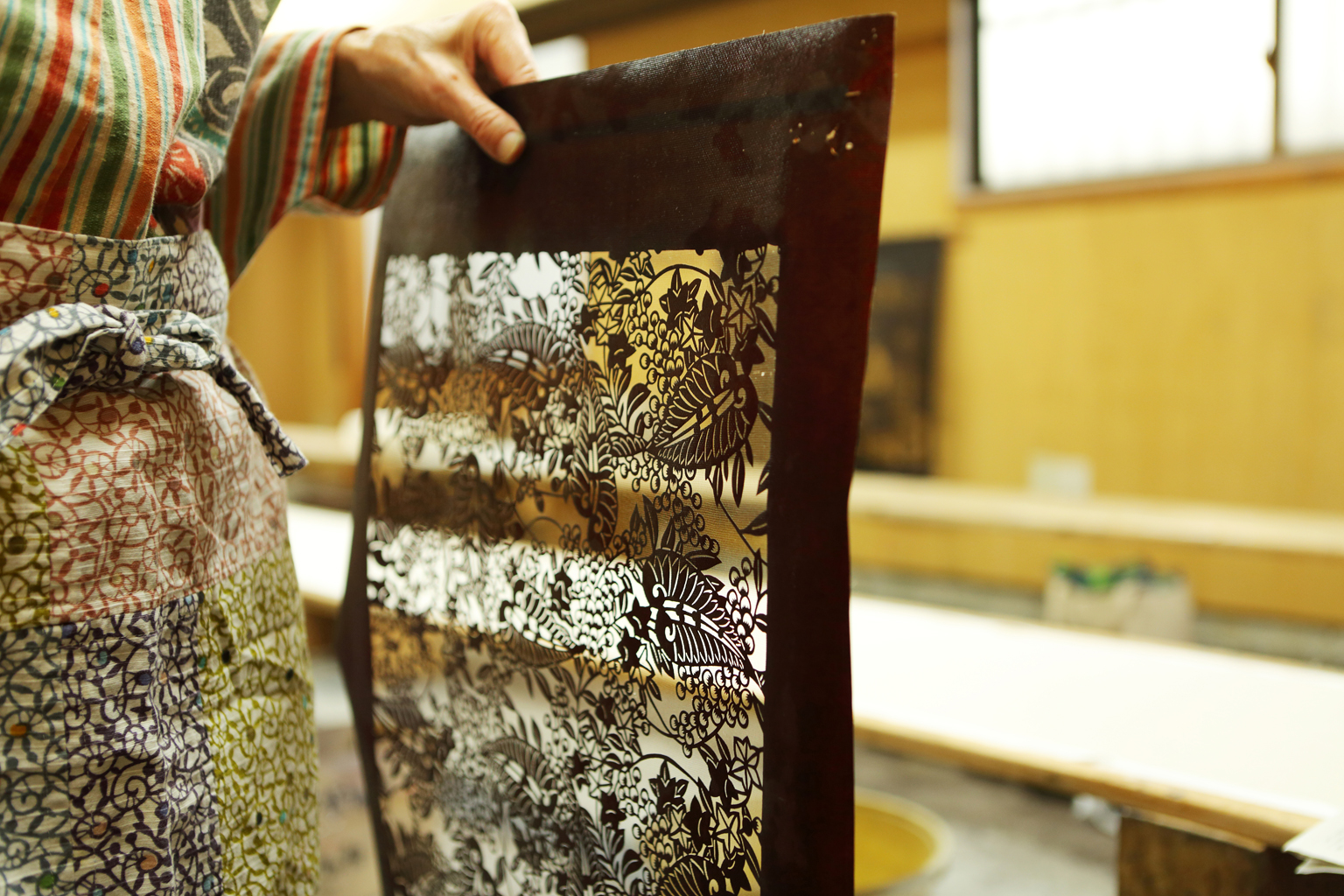
An Ise stencil used in komon dyeing. Washi reinforced with silk mesh is treated with persimmon tannin and hand-carved one by one by master artisans.
Among the various stages of production, perhaps the most technically demanding is kata-zuke—the process of applying the paste to the fabric.
Steady Hands, Clear Mind
Inside the workshop stand long 6-meter boards. A plain bolt of fabric is carefully laid out, and a stencil is placed on top. Using a spatula, a bright blue paste is evenly applied through the stencil.
The Ise stencil undergoing kata-zuke is soaked in water overnight before use to increase flexibility, allowing for accurate pattern transfer. This moisture is what makes the designs come out straight and true.
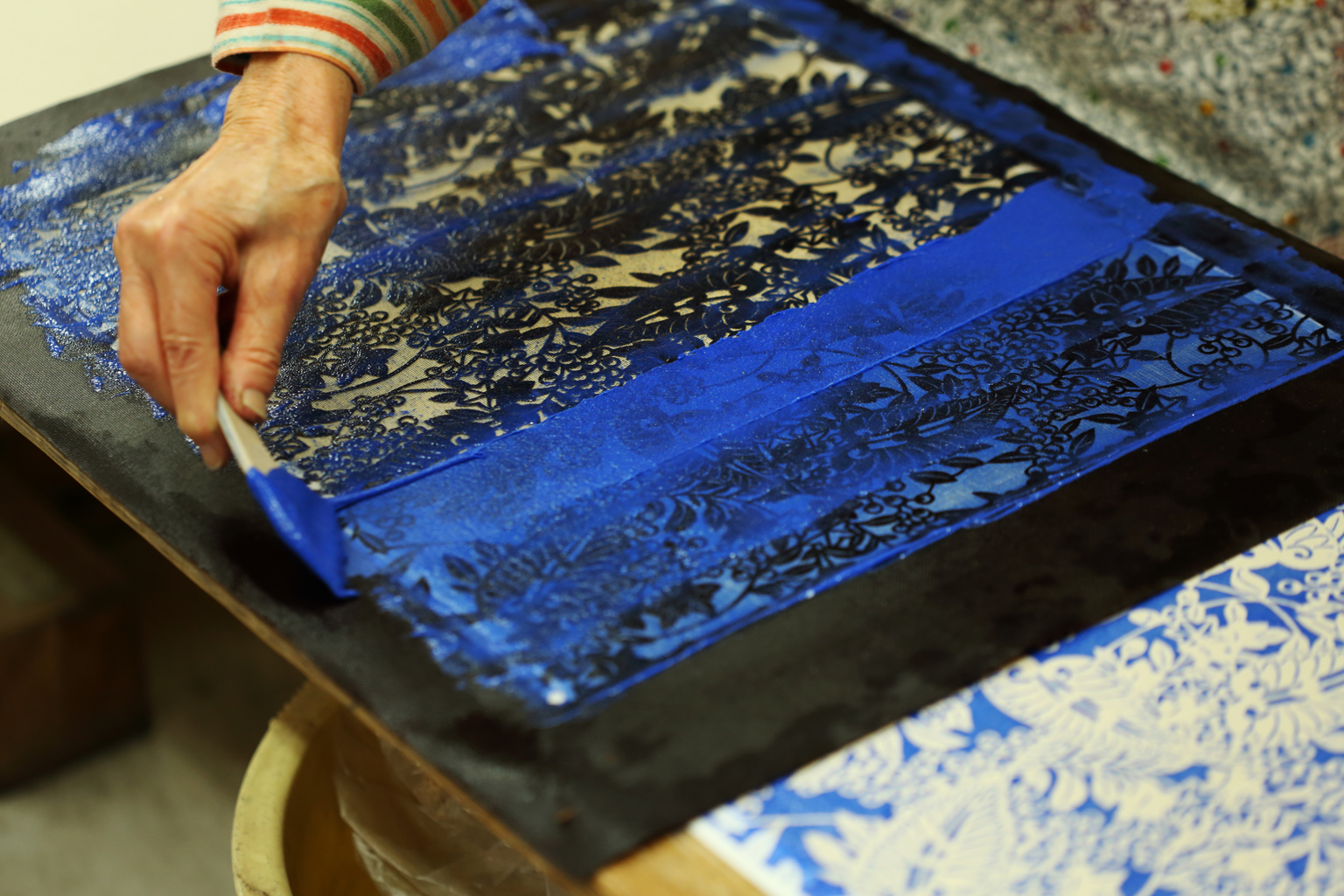
The paste used to transfer the pattern is made by mixing rice flour and ultramarine pigment. The vivid blue highlights where the paste has been applied but disappears completely when washed away. Mitsuhashi prepares this paste freshly each time she works.
Because the stencil only covers a limited area, it must be repositioned again and again along the fabric, ensuring perfect pattern continuity. For a full 12-meter bolt of kimono fabric, this process is repeated dozens of times.
As the work goes on, the stencil begins to dry, and unwanted paste may start to cling to its fine details. Each time this happens, it’s washed by hand at the sink in the workshop and moistened again. But if too much moisture remains, it softens the paste and affects the cloth. Each time, the stencil must be precisely dried before continuing.
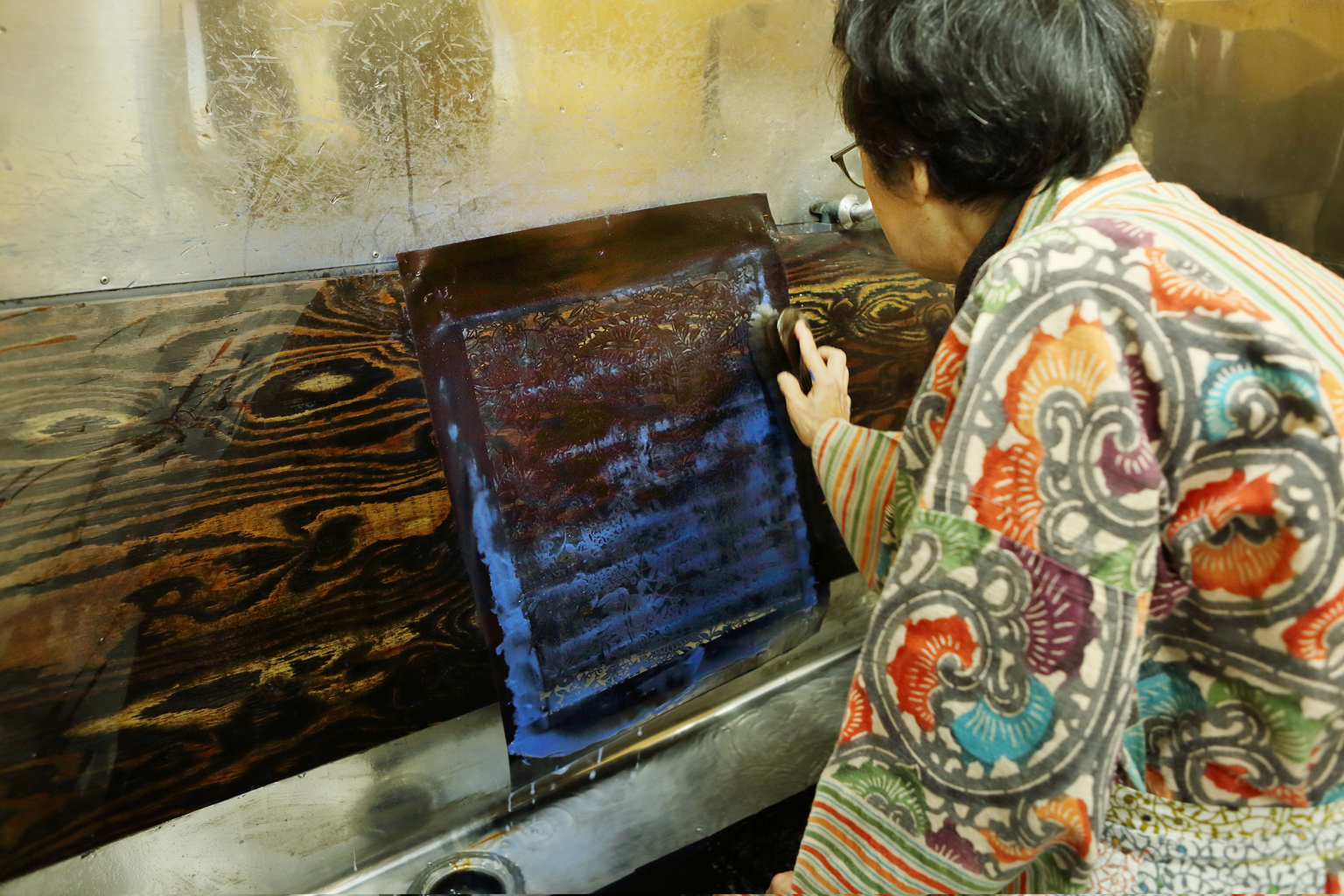
Using a brush, Mitsuhashi carefully washes away paste from the stencil. Even in winter, she avoids warm water so as not to affect the result, working with cold water instead.
“My hands get so rough and dry from all the water and lose all their oil, but I’m used to it. If you cut corners, if you let it dry or leave it dirty, it’ll ruin the whole piece. I’ve been doing this for decades, so I don’t even think of it as hardship anymore.”
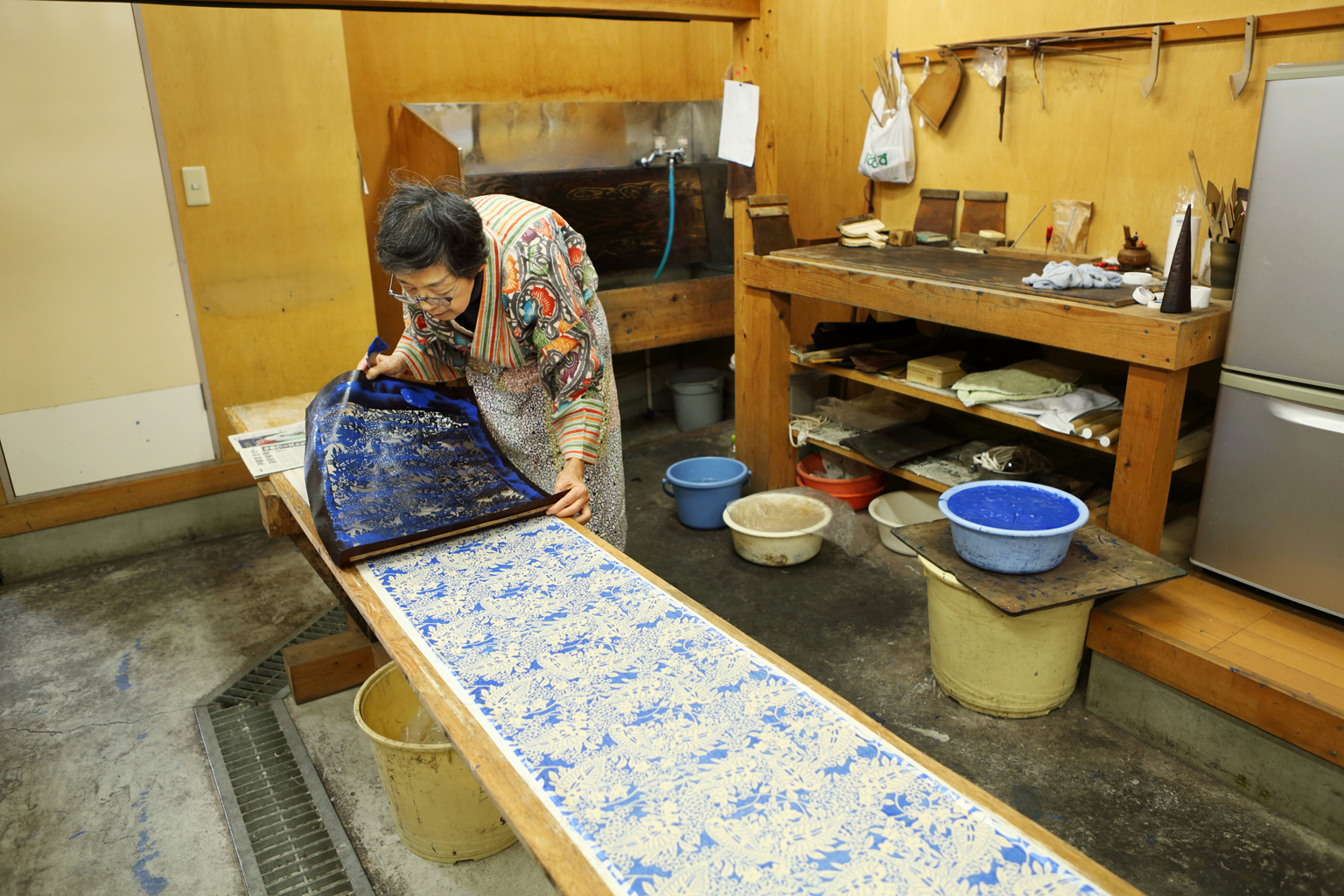
Though stencils have guiding marks, placing the supple sheet exactly where needed takes precision. Mitsuhashi’s movements are fluid and confident, maintaining perfect pattern alignment with impressive grace.
Mitsuhashi Kobo takes the added step of applying the paste twice in exactly the same place, a method known as nido-zuke (twofold application). This extra round of work increases the paste’s thickness, which in turn creates clearer and more defined white lines when the dyeing is complete. Though it adds labor and the risk of misalignment, the result is worth it. In the stillness of the workshop, only the sound of the spatula at work can be heard.
“Doing the same thing over and over takes patience. But once you start, there’s no stopping partway. Kata-zuke is key to making the pattern come out beautifully. That’s why you must never rush, and always see it through with full concentration.”
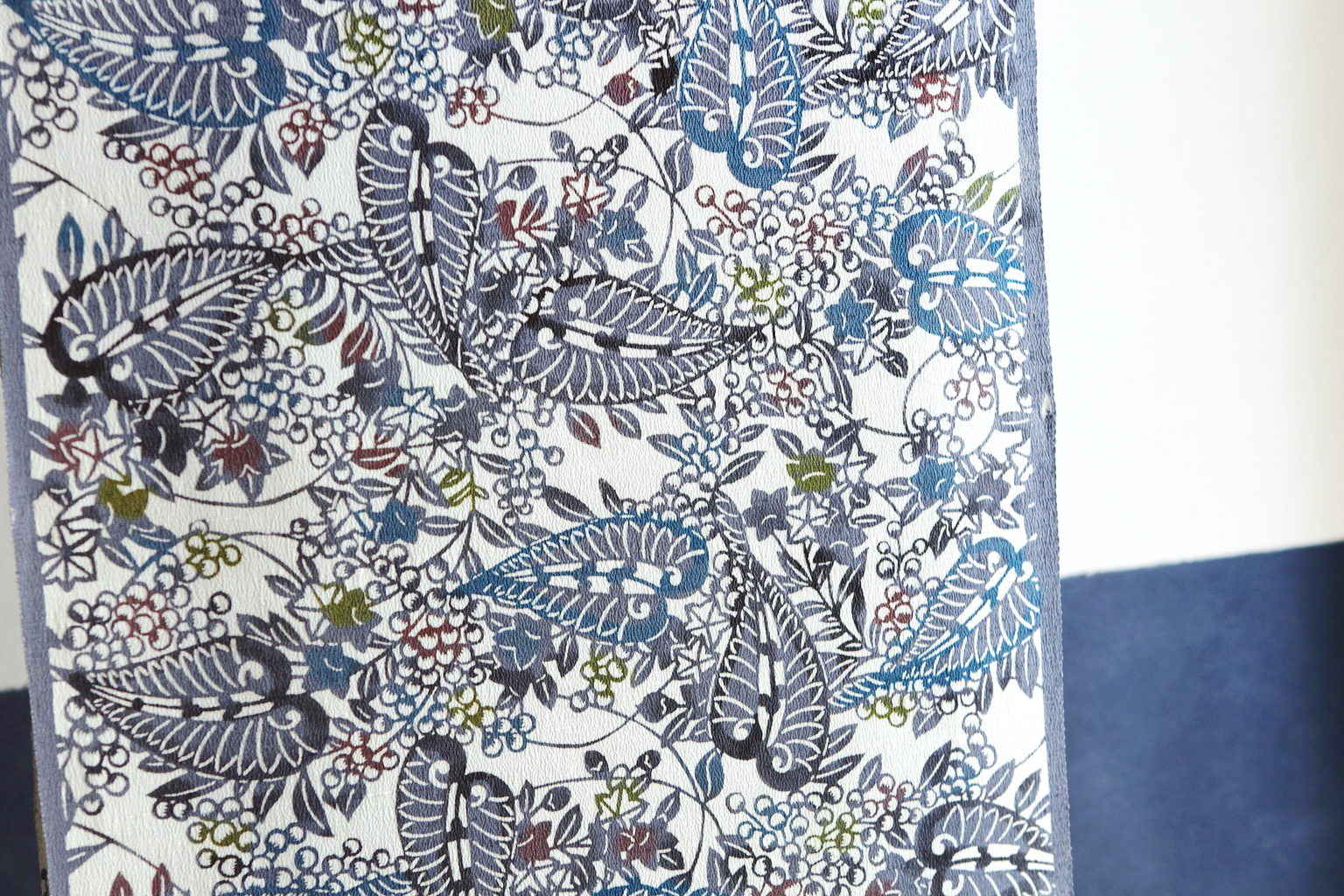
An example of the finished Aoi ni nanten (hollyhock with sacred bamboo berries) pattern shown during the kata-zome process. The paste-resist areas remain white, allowing the delicate design to vividly emerge.
We were also able to observe the dyeing step known as iro-sashi (color application). Using small brushes, color is carefully applied by hand to the areas not covered with paste. If too much dye is applied, it can seep through to the reverse side of the fabric, so this step requires a slow, patient touch and great care.
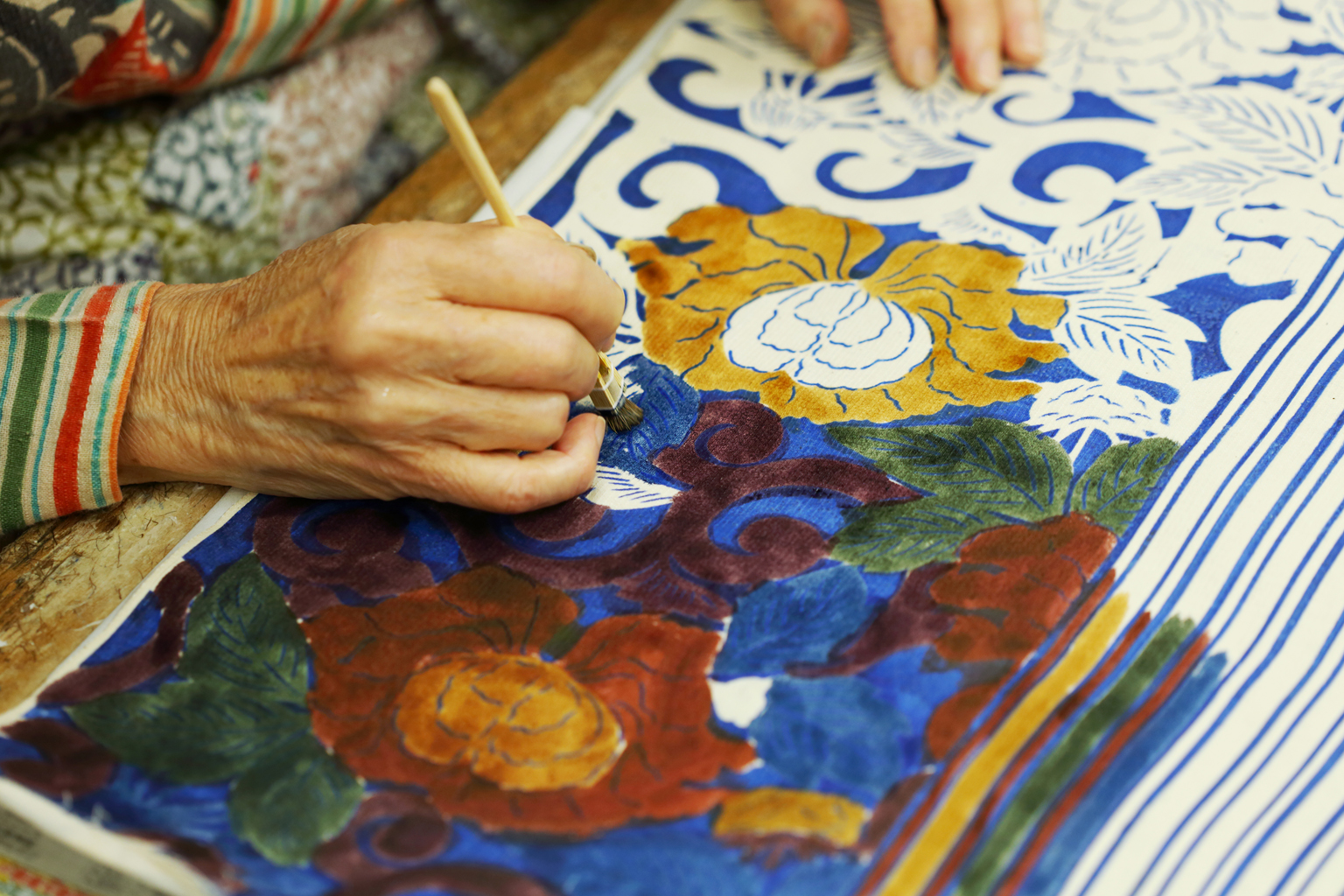
Mitsuhashi mixes her dyes from scratch for each piece, meaning no two colors are ever the same. Planning the color palette for the entire fabric beforehand is an essential part of the process.
Bold and vivid coloring is one of the hallmarks of Mitsuhashi Kobo’s work—but how the color is applied, says Mitsuhashi, comes down to intuition. She says this is the part of the process she enjoys the most.
“I think about how the finished kimono will look when it’s worn and aim for a balanced composition. Once I begin, it’s like entering the world of color—it’s a deeply absorbing, almost meditative experience.”
Blending Inherited Technique with a Contemporary Sensibility
From the beginning of production to the final dyed piece, the process can take several months of painstaking handwork. The skill and disciplined focus it requires, says Mitsuhashi, are thanks to the guidance of her father-in-law, Eizo.
“He was strict when it came to work, but deeply dedicated to research and incredibly knowledgeable. He loved playful, original patterns. In fact, many of the stencil designs we use today were drawn by him and commissioned for carving. The world of Mitsuhashi Kobo’s motifs is something he really built.
There was a time, during the studio’s peak, when we outsourced the actual production and he stepped away from the floor. But later, when I saw him doing kata-zuke again, I was astonished at the speed and precision. He was a master craftsperson in his own right.”
While staying true to tradition, Mitsuhashi is also proactive in developing products that suit modern lifestyles. One such creation is a reversible half-width obi (kimono sash) with a different pattern on each side.
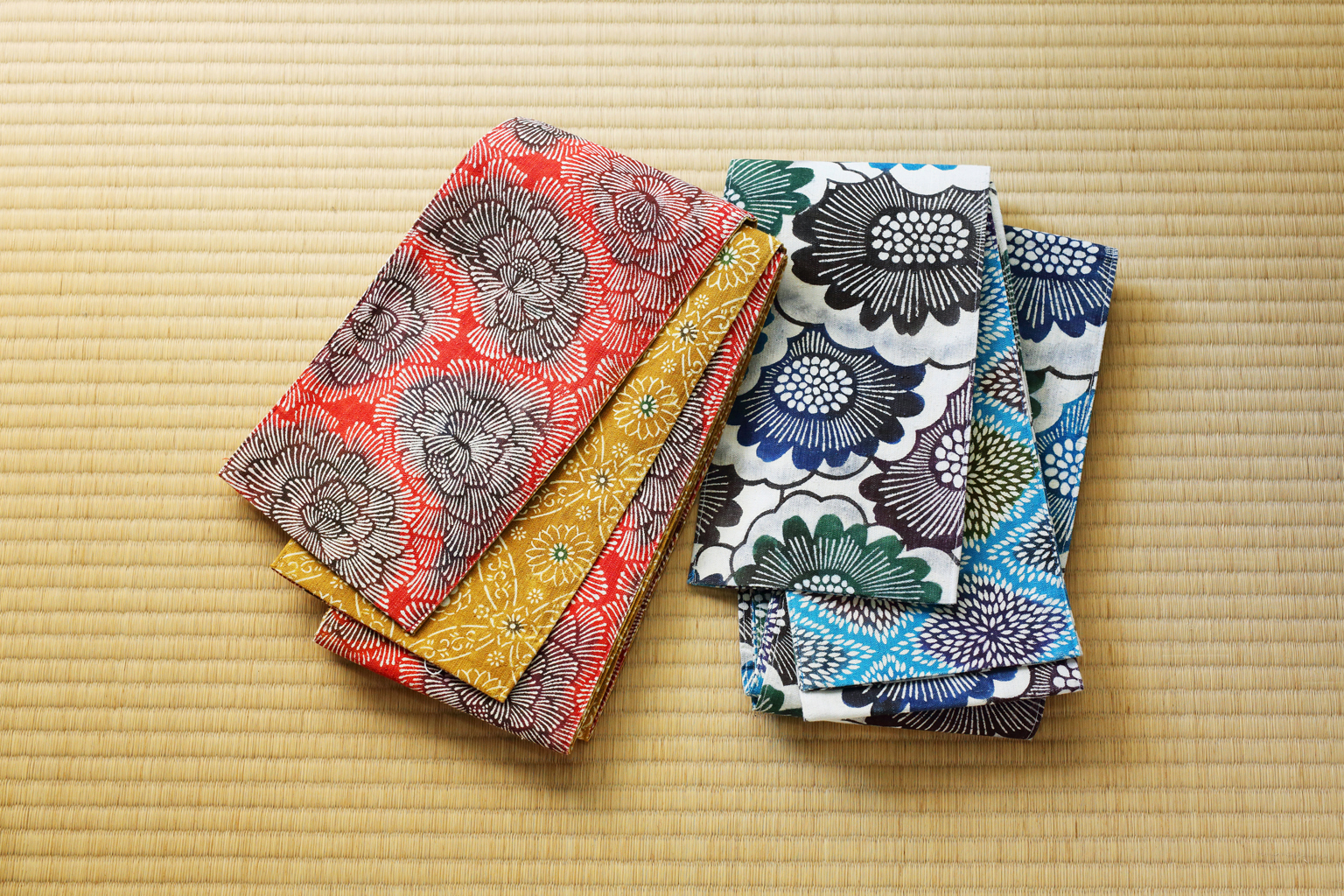
With two patterns in one, these reversible obi allow for greater styling flexibility and can be worn in any season, making them popular among younger generations who enjoy a more modern take on kimono.
Recognizing that everyday opportunities to wear kimono are fewer these days, Mitsuhashi has spent nearly 30 years engaging with customers at department store events and sales, valuing direct conversations and feedback.
“I think it’s those customer interactions that inspired our color choices, like turquoise blue and pink, and product ideas like reversible designs that align with how people live today.”
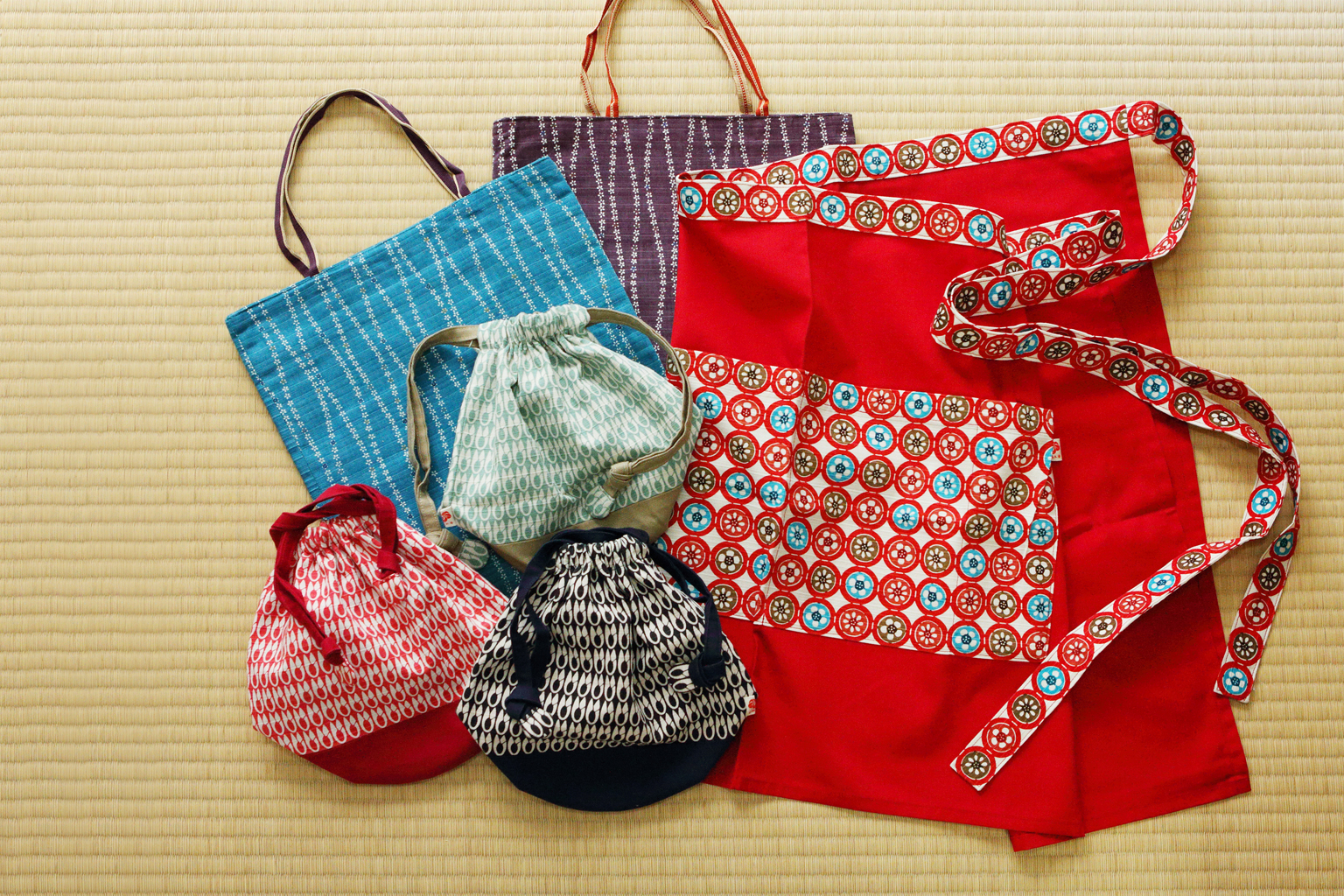
Mitsuhashi Kobo also produces kata komon lifestyle goods, such as café aprons, drawstring pouches, and tote bags, that blend effortlessly into daily life. Their modern patterns and styling have won many fans.
A Mother-Daughter Effort to Share the Beauty of Dyeing
It’s been over 70 years since the previous generation moved to Edogawa City in 1950. Since joining the Edogawa Traditional Art Crafts Association, the studio has gained more opportunities to exhibit, sell, and demonstrate their craft.
“We really feel the support Edogawa City offers craftspeople like us. We’ve also participated every year in the Edogawa Traditional Craft Industry, Academia, and Public Project, working with Joshibi University of Art and Design to develop new crafts. It’s a great chance to learn from the perspectives and ideas of younger people, and an important opportunity to introduce them to the appeal of dyeing.”
A new chapter for the future has begun, with Mitsuhashi’s eldest daughter, Matsumoto Nobuko, now apprenticing as the studio’s seventh-generation successor. “There’s so much I still need to learn from my mother,” says Nobuko, “but I want to carry on the work my grandfather and father poured their hearts into.”
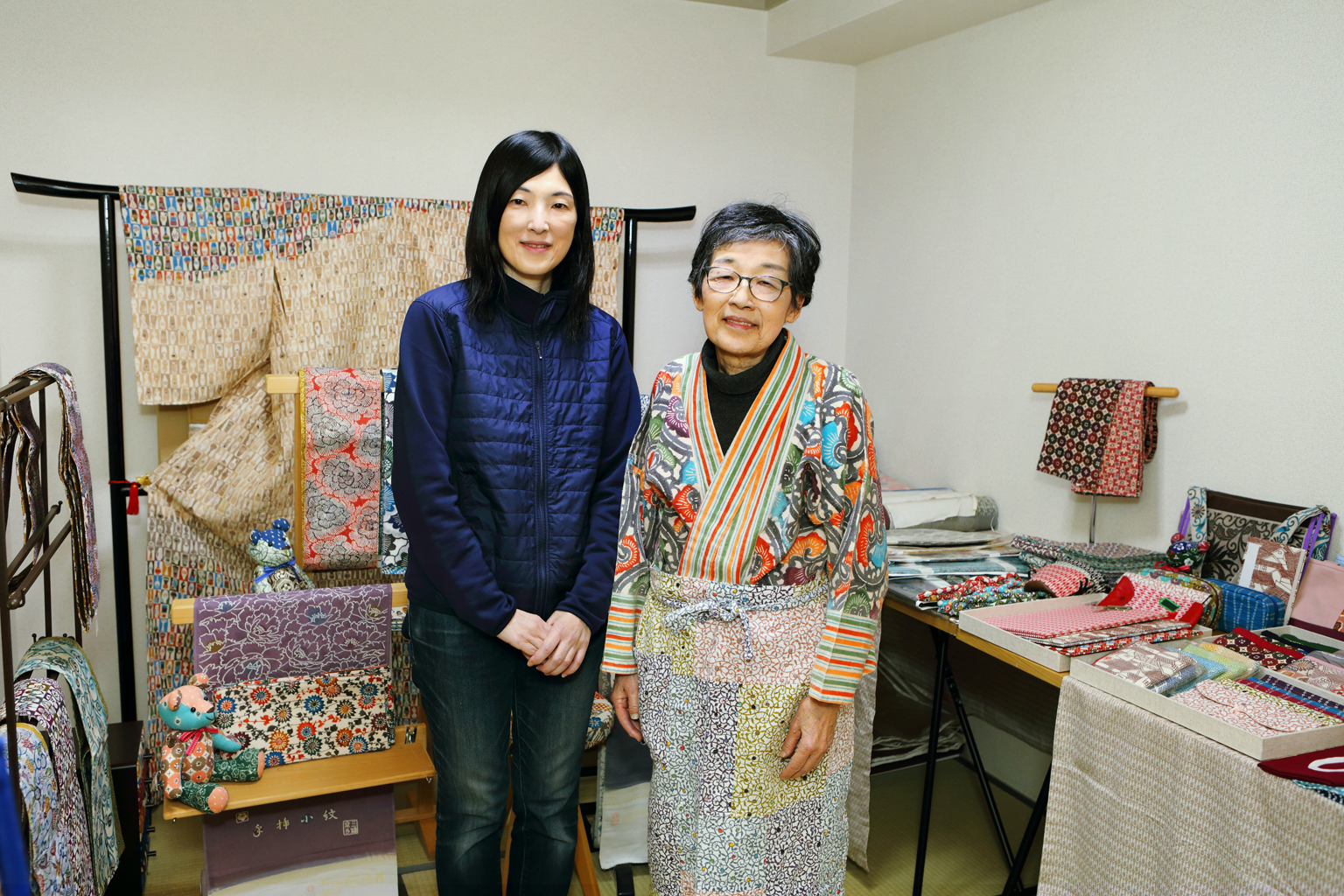
Seventh-generation apprentice Matsumoto Nobuko (left). “We’re family, so of course we argue sometimes,” smiles sixth-generation Mitsuhashi Kyoko (right). “But I just want her to take her time and do her best. I hope we can continue to grow the studio together.”
“It used to be expected that daughters-in-law would join the family business. That’s how I got started, and over time, I said goodbye to both my father-in-law and husband. You’d think I’d be free to do as I please now, but this dyeing work has permeated who I am, I guess. Who knows what’s ahead? But once you’ve started something, continuing it steadily—that’s a matter of personal principle. And that’s something I hold dear.”
That unwavering, step-by-step dedication is what continues to sustain the dye work of Mitsuhashi Kobo.
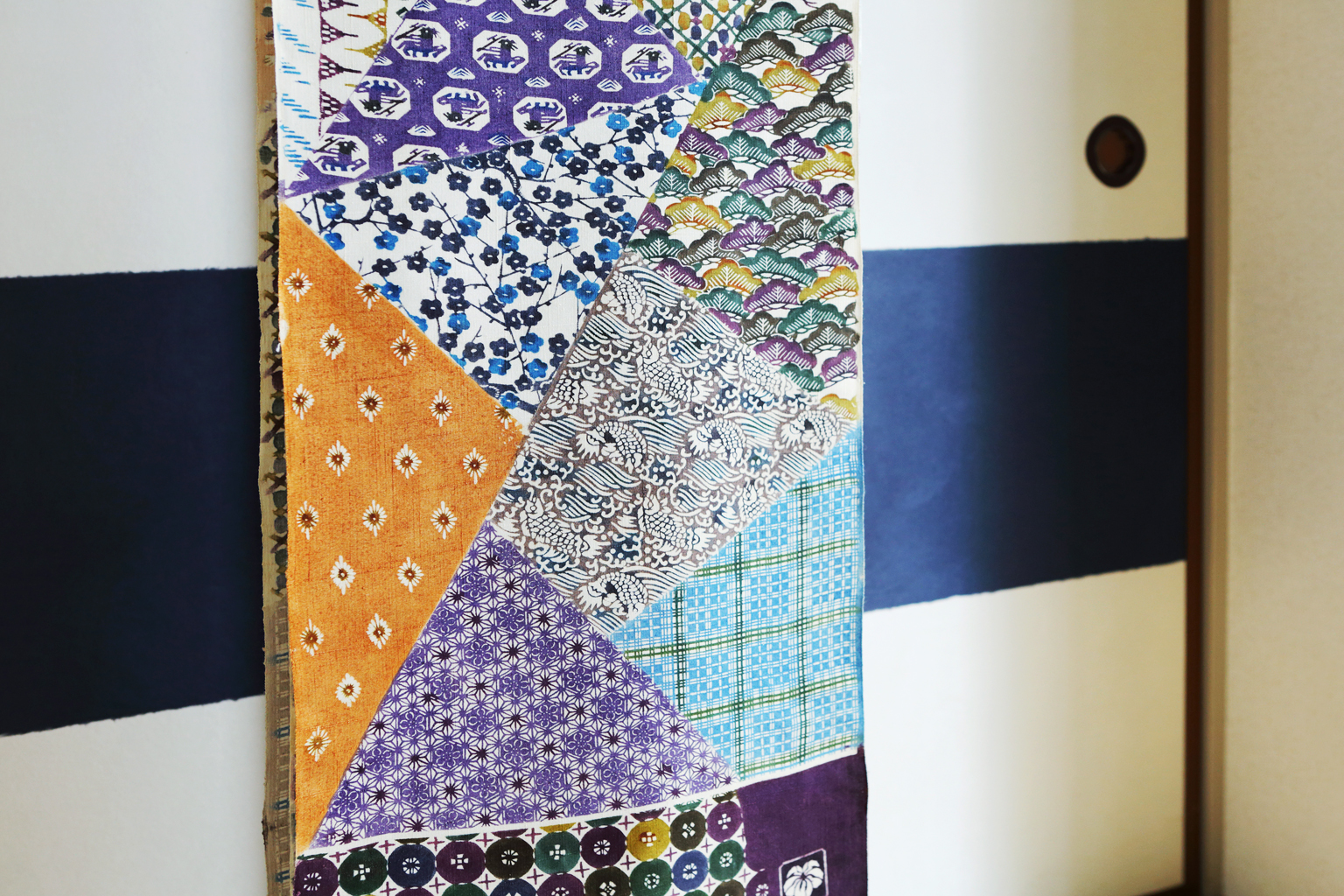
Writing: Kiuchi Aki
Photos: Takeshita Akiko
Introduction of the Artisan
Founded during the Kansei era (1789–1801) in the late Edo period, Mitsuhashi Kobo traces its roots back to first generation Matsumotoya Kintaro, who established a traditional indigo-dyed yukata workshop in Honjo-Midoricho. In 1950, fifth-generation craftsman Mitsuhashi Eizo opened Mitsuhashi Senkobo, with the sixth generation, Mitsuhashi Kyoko, beginning her training in 1969. Fusing traditional kata komon techniques passed down since the Edo period with contemporary colors and Okinawan bingata influences, Mitsuhashi’s work has earned widespread acclaim. In 2004, the craft was designated an Intangible Cultural Property of Edogawa City.
・Mitsuhashi Kobo
・29-11, Nishikomatsugawamachi, Edogawa-ku, Tokyo,

